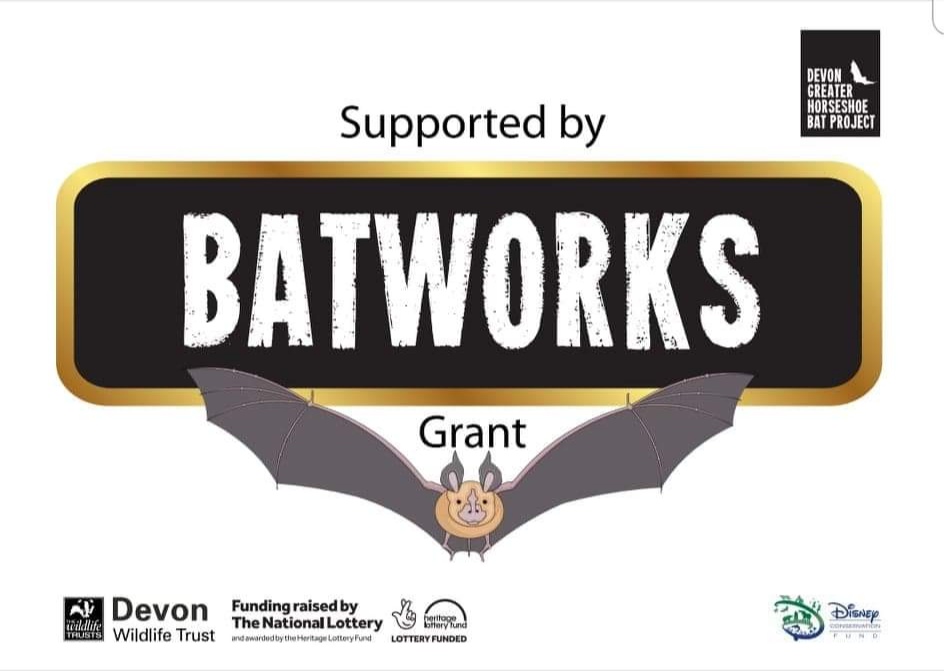Pond Creation
During the winter of 2018/2019 we had the idea to create a small wildlife pond within our woodland because this would create a new and very important habitat with the aim to boost the level of invertebrates and provide food sources for the bats, we had spoken with a local officer from Devon Wildlife Trust, specifically The Greater Horseshoe Bat Project, about the benefits of having a pond on site, my thoughts were on creating a temporary pond which is one whereby its levels will fluctuate throughout the year pending rainfall levels. The Greater Horseshoe Bat Project were keen to help me with the construction. Instead of installing one pond I opted for three smaller ones with varying habitat differences, two being smaller and deeper, but still under one meter in the deepest part, and the other being much shallower and open specifically so birds can swoop down and drink on the wing (such as The Nightjar). I had hoped all three could be sealed with Sodium Bentonite however the lower two would not compact sufficiently and I had no alternative but to use a liner on them. Sodium Bentonite is basically natural clay in either powder or granular form and is great for sealing or lining ponds,on contact with water it swells to seventeen times its size but the key to successful lining is in the compaction. Although my soil had a good amount of clay within it, it was not sufficient to hold water on its own. Within hours of water being in the ponds the Broad Bodied Chaser had claimed its territory followed by pond skaters, mosquito larva, water boatman and diving Beetles. The speed of the colonisation is remarkable and as the ponds mature I will post updates of the wildlife they are hosting. During their build I hired a bat detector which recorded seven different species including The Greater Horseshoe, I will monitor their numbers over the years hoping that the provision of the ponds and management of the rides will aid their numbers.
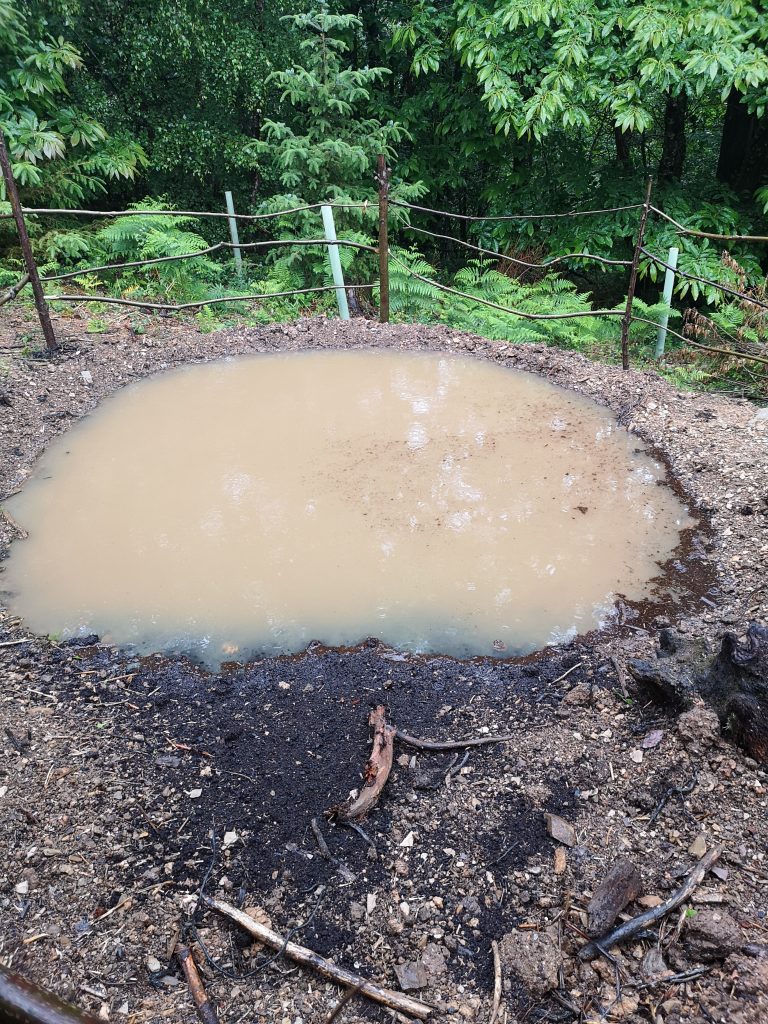
Filling up 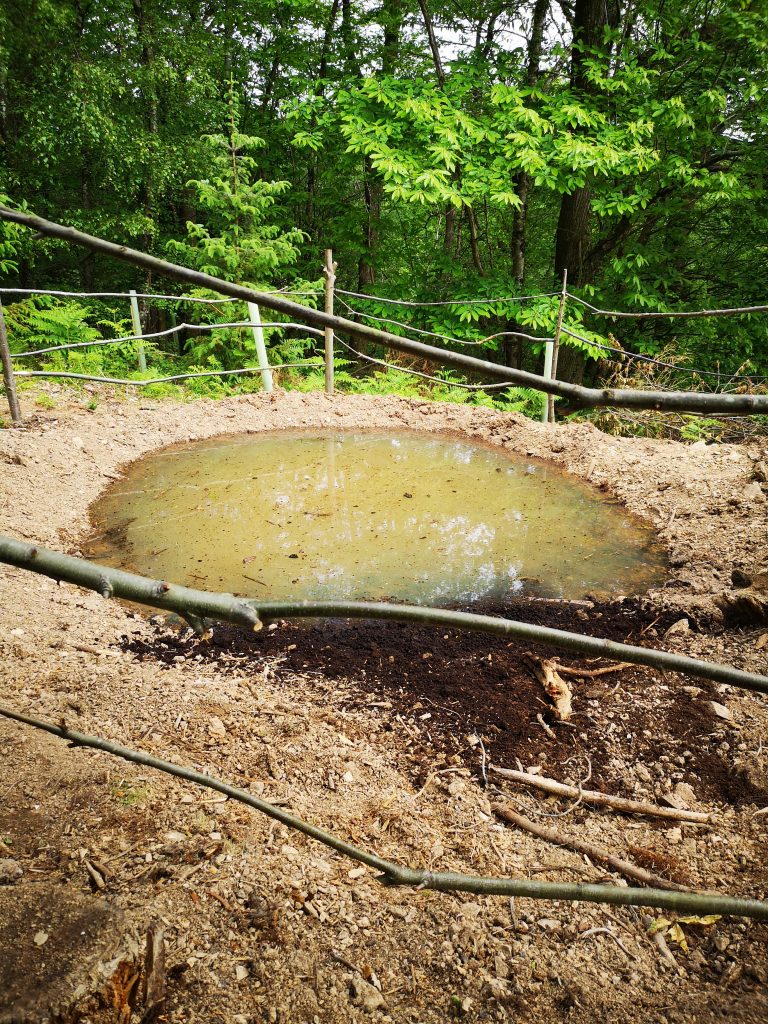
Max level 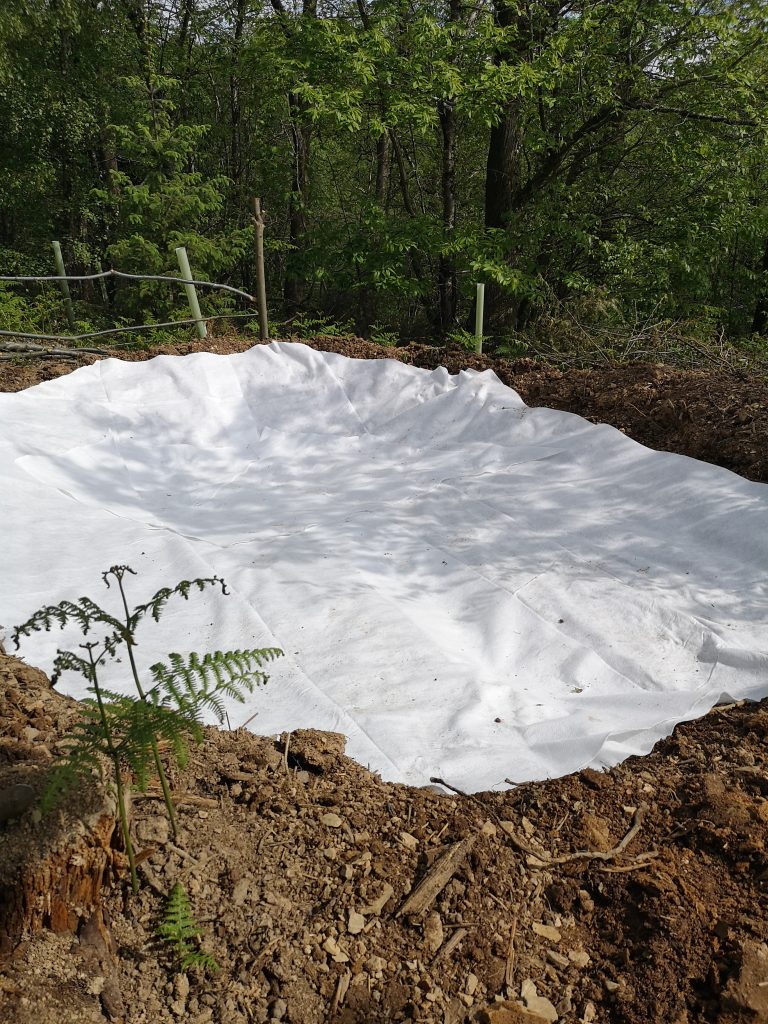
Underfelt in place 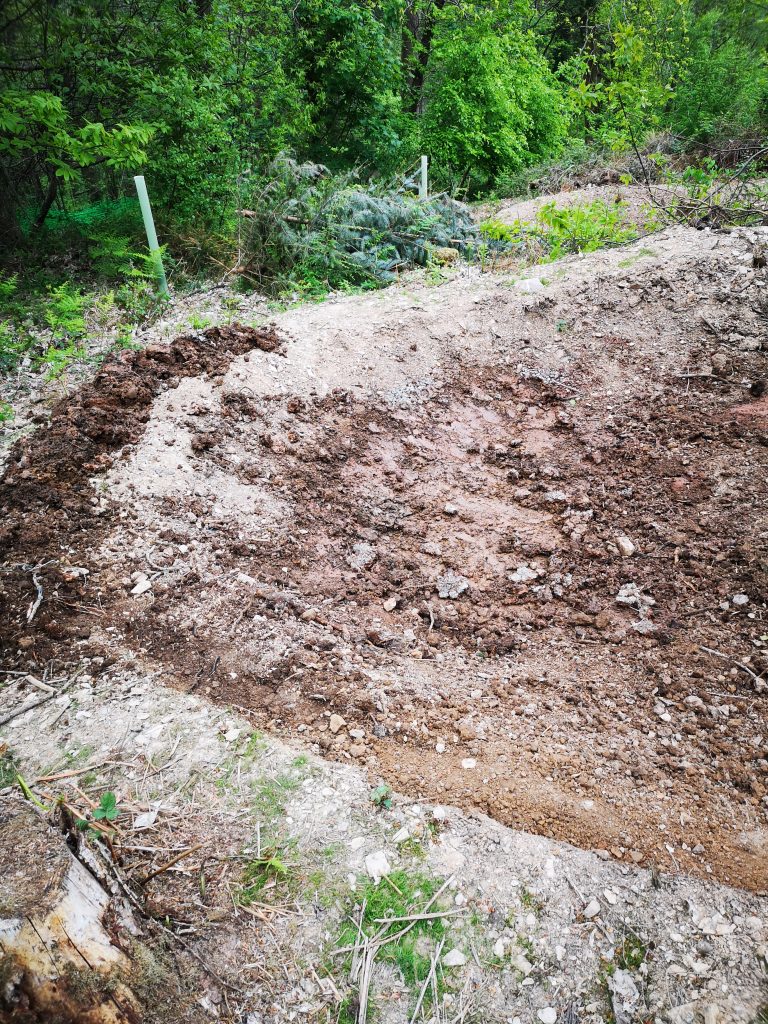
Bentonite visible 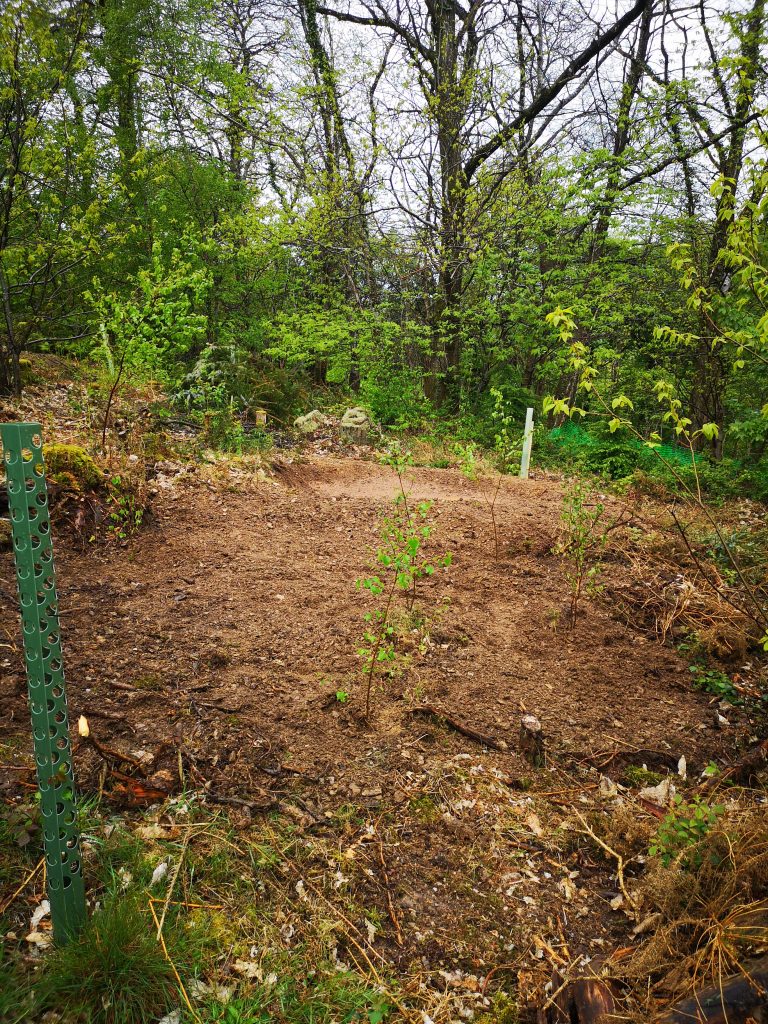
Small clearing made for access 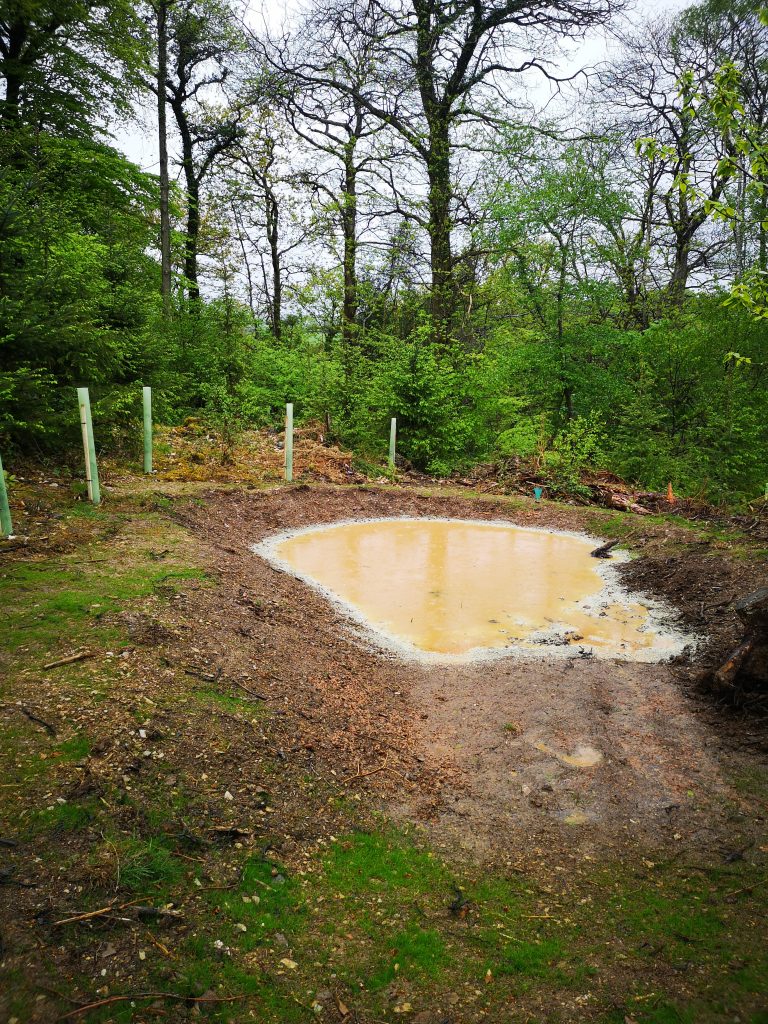
Rainfall activating the bentonite 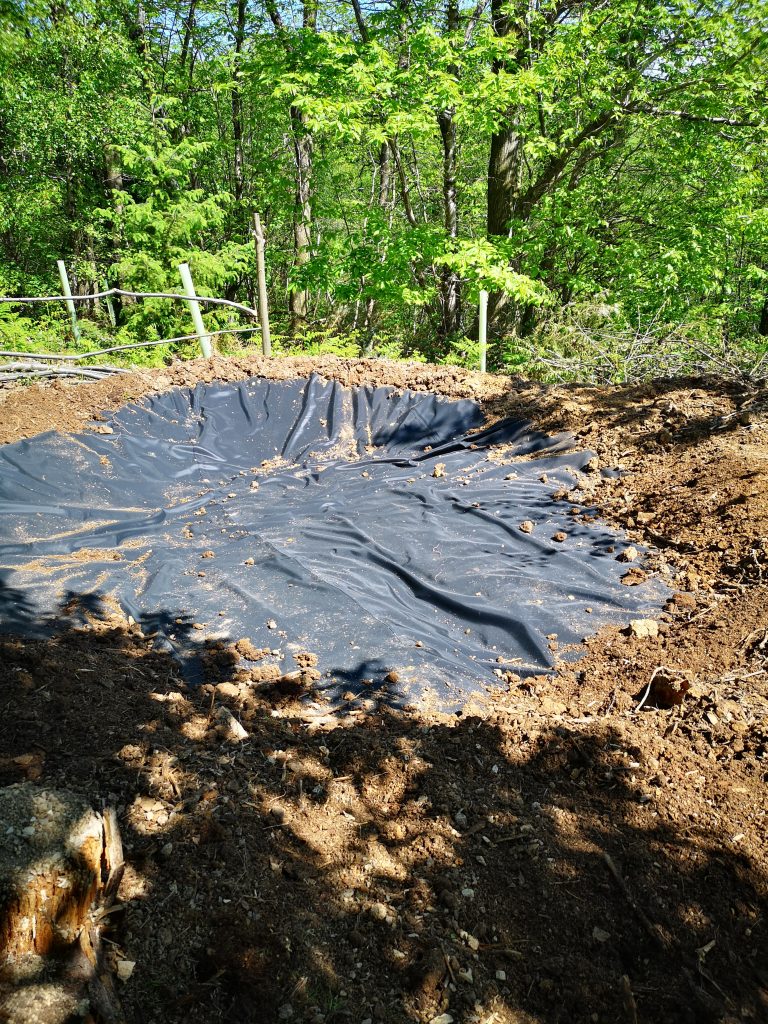
Liner in 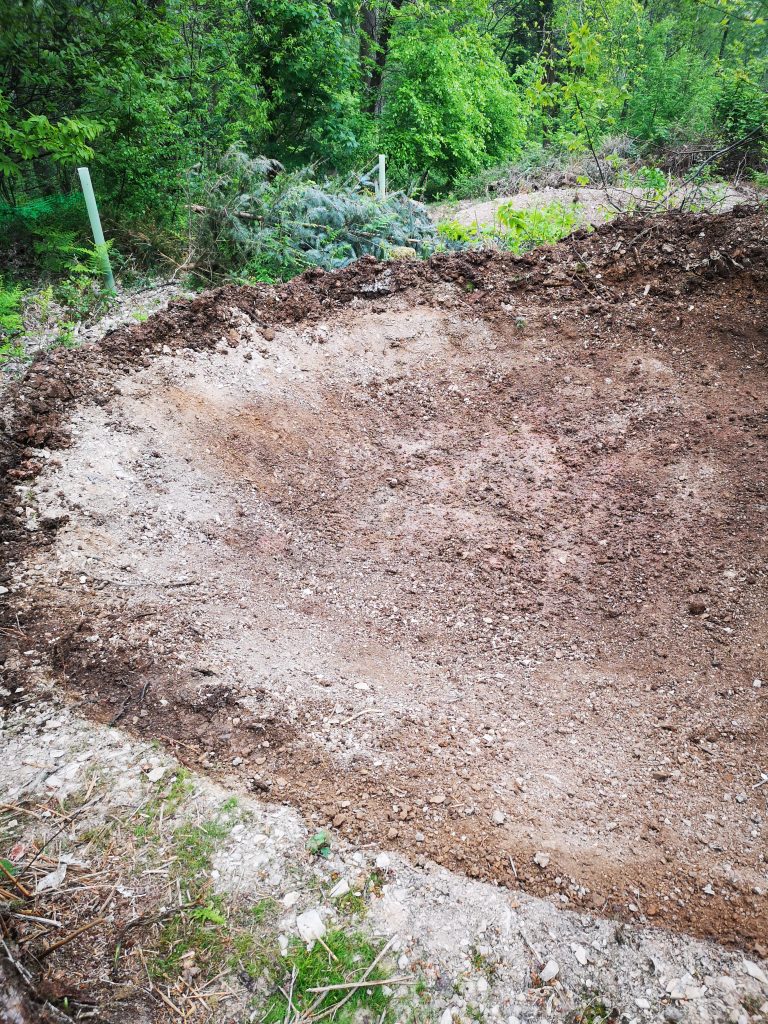
Sodium Bentonite added 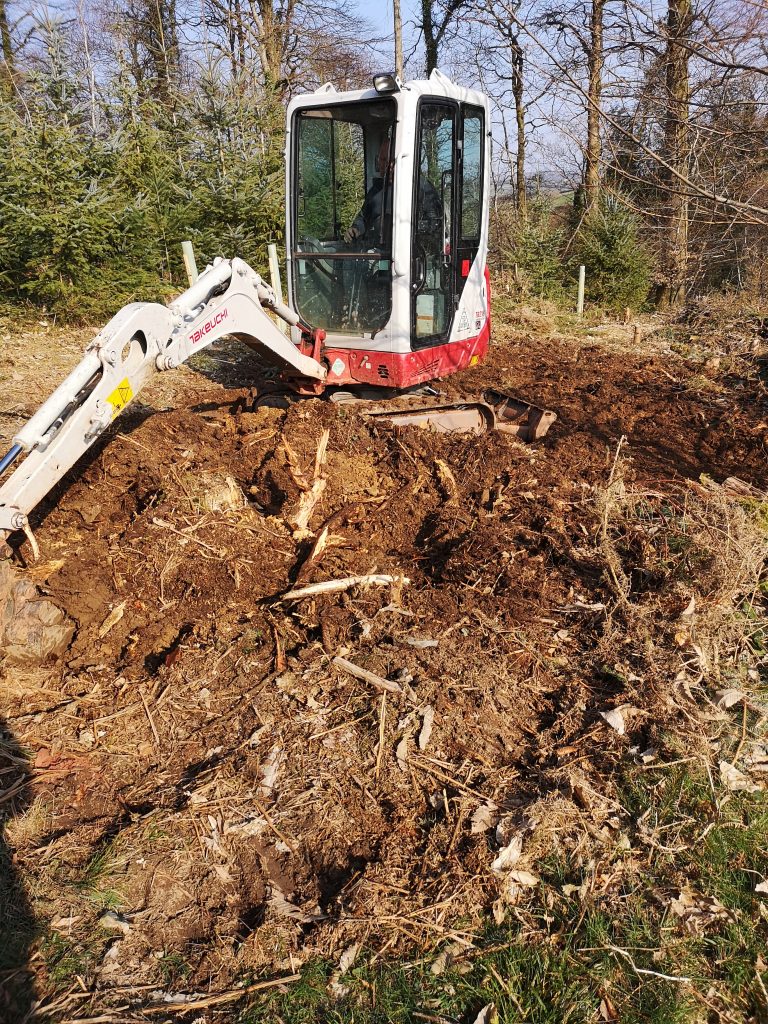
Mini digger making light work of the stumps 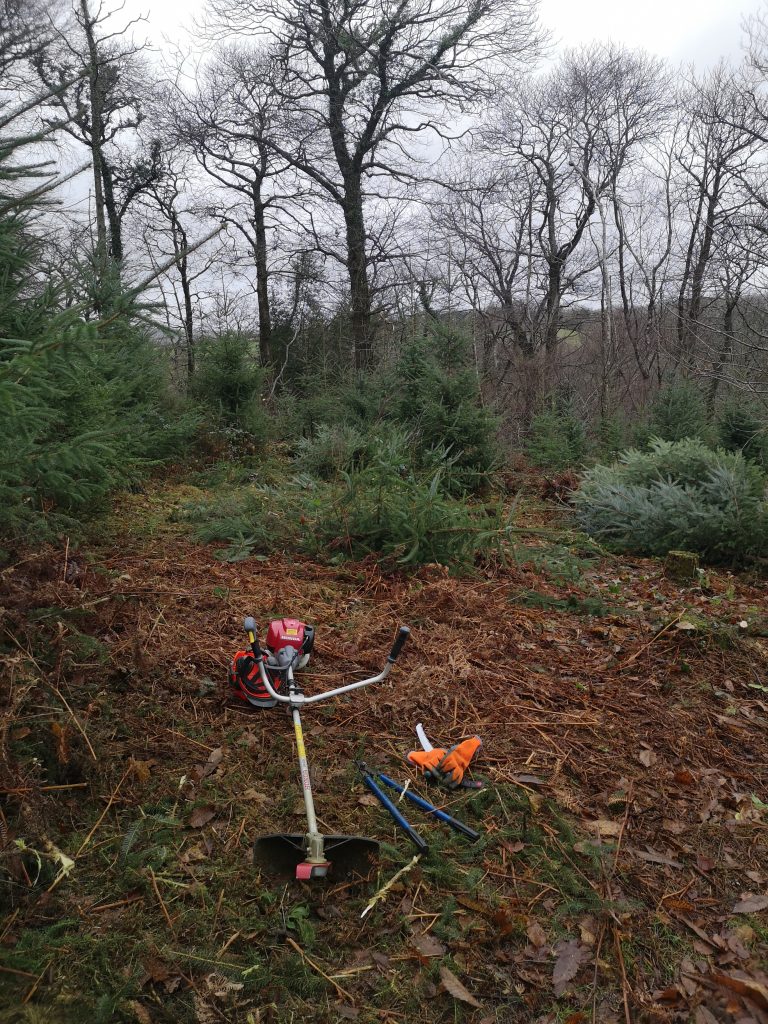
Honda Brushcutter worked hard 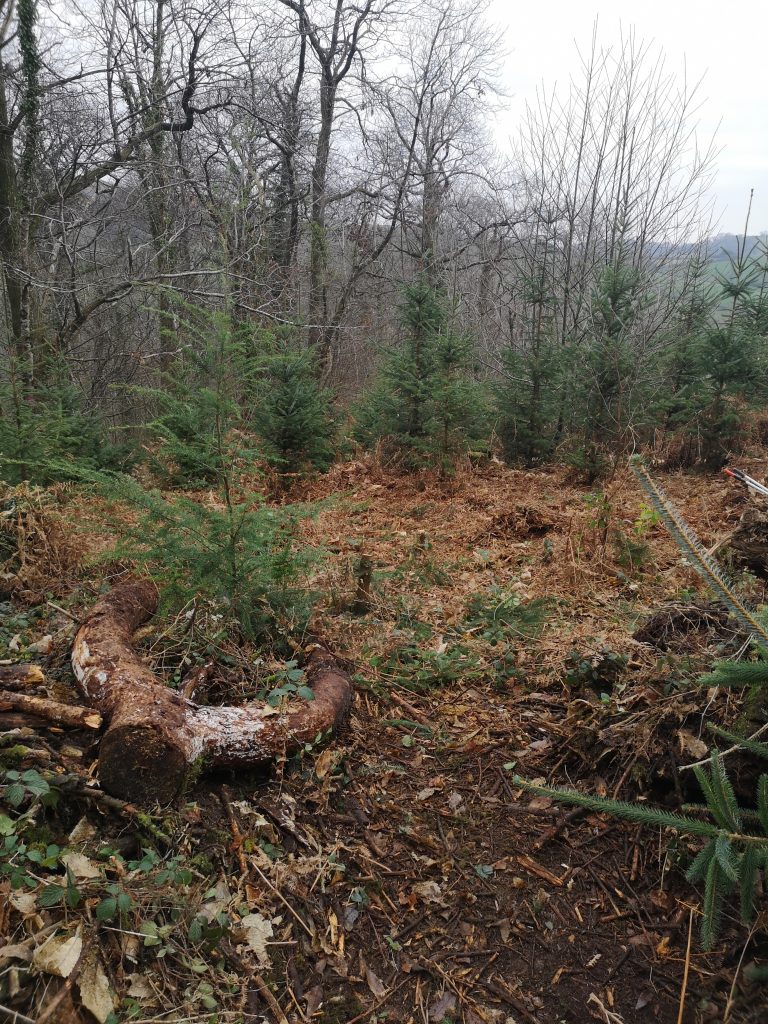
After clearing some young Sitka


